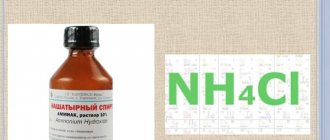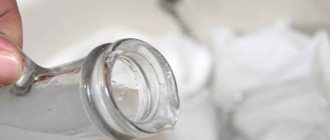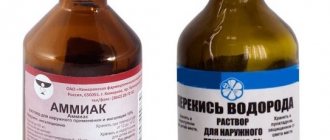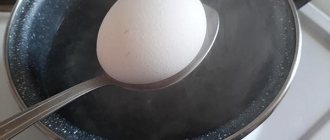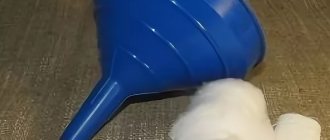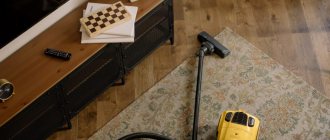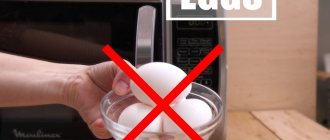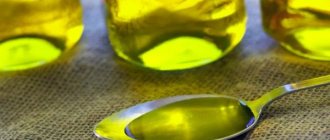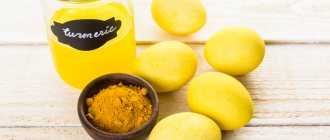Many people are personally familiar or have heard somewhere about ammonia. The first association that arises when mentioning this substance is its medical use. It is known that ammonia solution is a fairly frequent guest in offices before blood donation, since it has excellent properties of bringing a person to consciousness.
However, few people know that in addition to the medical field, ammonia is quite popular for household purposes. There are many options for using this 10% ammonia solution in the household. Below are the most popular areas of application where the action of ammonia is considered most effective.
Venus
This planet, named after the Roman goddess of flowering gardens and spring, has a smell that is not at all reminiscent of apple blossoms in May. On the contrary, due to the huge concentration of hydrogen sulfide, Venus knocks you down with the pungent smell of rotten eggs. True, recent studies have shown that closer to the border with space in the atmosphere you can smell the smell of burnt matches. You can find out where the tradition of naming planets in honor of the gods came from here .
Whitening
In addition to removing stains, ammonia works great for bleaching things. If your home has light-colored textiles, you can return them to their original boiling white color using an ammonia solution. For a stronger effect, use ammonia in tandem with hydrogen peroxide.
Related Links: 9 Unexpected Uses for Cucumber Pickle
Yellowed tulle, worn-out cushion covers or a grayed festive tablecloth are soaked in a solution consisting of 5 liters of hot water, 50 ml of peroxide and 30 ml of ammonia. After lying in the solution for about 2 hours, the item must be washed and rinsed thoroughly. After this procedure, any material will look like new.
Mars
In quiet times, the red planet has a persistent aroma of rotten meat due to the same sulfur in the rocks of the planet. However, Mars is rarely calm and often experiences sandstorms. Heavy winds raise dust, which consists of iron oxide, and the aroma of rotten eggs is replaced by the tart smell of rust.
Removing stains
Ammonia solution is most popular for removing difficult stains and old stains. If conventional detergents are unable to cope with the problem, it’s time to move on to the big guns in the form of ammonia. Also, ammonia is an excellent cleaner for silver items.
With its help you can get rid of stains on carpet, furniture upholstery and home textiles. To do this, treat the stain with a solution of ammonia prepared in a ratio of 4 parts water x 1 part ammonia. If the stain has not completely disappeared, double the amount of ammonia in the solution.
Related links: How to store pots in the kitchen - save space
Jupiter
Perhaps this planet has the largest selection of smells after Earth. In different parts of the huge gas giant you can smell different smells: a cleaning product due to the overwhelming amount of ammonia, the same rotten eggs, sulfur impurities and the aroma of bitter almonds due to hydrocyanic acid hovering in the atmosphere of Jupiter. True, it is worth saying that the planet mainly consists of hydrogen and helium, which are odorless, and therefore aromas on Jupiter are rare.
AMMONY
AMMONY
– the old name for ammonium chloride NH4Cl.
This salt (density 1.527 g/cm3) forms colorless crystals with an ammonia odor, highly soluble in water (37.2 g/100 g of water at 20°). Ammonium chloride melts at 400°C, but this only occurs at elevated pressure. Under normal conditions, highly volatile NH4Cl easily sublimes, and above 335°C it decomposes. Ammonium chloride does not form crystalline hydrates. Reacts with concentrated sulfuric acid, alkalis, and various oxidizing agents. Also on topic:
CHEMISTRY HISTORY
Aqueous solutions of ammonium chloride are acidic and turn blue litmus paper red due to the hydrolysis reaction:
NH4Cl = NH4+ + Cl-
Also on topic:
MEDICINE
NH4+ + 2H2O NH3 H2O + H3O+,
in which, in addition to oxonium cations H3O+ - carriers of acidity, the weak base ammonia hydrate NH3·H2O is formed. When heated, ammonium chloride sublimes with simultaneous decomposition into ammonia and hydrogen chloride:
NH4Cl NH3 + HCl
After cooling the mixture of these gases, ammonium chloride is formed again, the reaction proceeds in the opposite direction. When hydroxides of alkali and alkaline earth elements act on ammonium chloride, ammonia NH3 is released, for example, in a reaction with calcium hydroxide:
2 NH4Cl + Ca(OH)2 = 2 NH3 + CaCl2 + H2O
Ammonium chloride reacts with bromine water, oxidizing to nitrogen:
2NH4Cl + 3Br2 = N2 + 2HCl + 6HBr
At elevated temperatures, ammonium chloride reacts with salts - nitrates and nitrites, forming gaseous dinitrogen oxide and nitrogen:
NH4Cl + KNO3 = N2O + KCl + 2H2O
4Cl + KNO2 = N2 + KCl + 2H2O
These reactions occur even in solution.
In nature, ammonia does not form large accumulations. It is found in the form of small deposits and crusts, often together with sulfur, near volcanoes, in caves and cracks in the earth's crust. Ammonia was known to the priests of Ancient Egypt as far back as one and a half thousand years BC. It was obtained by sublimation from the soot of chimneys of furnaces heated by camel dung. The Arabs and Egyptians called the resulting colorless crystals “nushadir” (hence the word “ammonia”). Ammonium chloride was also a natural product of the decomposition of animal urine and feces in the oasis of Ammon in the Libyan Desert, through which numerous caravans passed. The temple of the god Ammon, widely known in Egypt, was located here. The name of the oasis was later reflected in the words “ammonia”, “ammonium salts”. Those who worshiped the god Ammon were called "Ammonians." During their rituals, they sniffed ammonia and froze in blissful ecstasy; Presumably, in those days ammonium chloride served as some kind of drug...
Alchemists who received ammonia and hydrogen chloride always observed with amazement and mystical horror the formation of white smoke when these two gases were mixed. They believed that two “spirits” met in the air, the battle of which ended with the shedding of their “blood” - the formation of smoke and a white coating on surrounding objects. In fact, it was a reaction of neutralization of a gaseous weak base - ammonia - with a volatile strong acid - hydrogen chloride.
In 1673, the English physicist and chemist Robert Boyle (1627–1691) observed a stick dipped in hydrochloric acid smoking over burning manure. The “smoke” was the result of the formation of tiny crystals of ammonium chloride when ammonia released from manure reacted with hydrogen chloride.
Until the 17th century Ammonium chloride was imported into Russia from Egypt and India. Only in 1710 was the first factory of the boyar’s son Nechaevsky built in the Yenisei province, which began to produce about five tons of ammonia per year. Ammonium chloride was obtained at this plant by neutralizing an aqueous solution of ammonia (ammonia) with hydrochloric acid.
Ammonia is used in medicine in the form of an aqueous solution as a diuretic. Ammonium chloride is easily absorbed from the gastrointestinal tract and is converted into urea (NH2)2CO with the simultaneous formation of hydrochloric acid:
2NH4Cl + CO2 = (NH2)2CO + 2HCl + H2O
Hydrochloric acid and urea are removed from the body in the urine, carrying away excess water, and at the same time sodium chloride ions, which cause edema.
Ammonium chloride was previously used in the treatment of bronchitis and pneumonia as an expectorant. In the old days, elderly society ladies, fearing fainting in the stuffiness, always carried bottles of “smelling salts” - ammonia. In an aqueous environment (for example, under the influence of moisture absorbed from the air), ammonium chloride undergoes hydrolysis, so it always smells a little like ammonia. Inhalation of ammonia causes stimulation of the respiratory centers. In small amounts, ammonia is a first aid remedy that helps bring a person out of fainting, however, large amounts of ammonia can cause respiratory arrest.
Ammonium chloride can be found in dry cell batteries or voltaic cells and is used in soldering and tin-plating of steel parts along with zinc chloride. The volatility of ammonium chloride is a property that allows the use of ammonia as a component of smoke-forming compositions. The fertilizer made from ammonium chloride is not very good (the nitrogen content is low, and the chloride ion is harmful to plants). But in medicine, ammonium chloride is still used (indispensable for edema, enhances the effect of diuretics - diuretics).
Lyudmila Alikberova
Neptune
And again rotten eggs. This terrifying smell is the leading one among our cosmic neighbors in the system, however, there is more gas here, and therefore the smell of eggs is not as noticeable as on Venus. Interestingly, such aromas may appeal to the Chinese, because they have been preparing “hundred-year-old eggs” , calling them the most exquisite delicacy.
Disinfection
A solution of ammonia can not only clean contaminated surfaces, but also disinfect them. Almost any surface in the house can be treated with an ammonia solution, for example, the surface of the dining table, dishes or sink - ammonia will perfectly disinfect all of this. Ammonia works well in preventing fungus and mold that appear in the space between the tiles in the bathroom or on the kitchen apron.
Pluto
Yes, thanks to scientific debates in the 2000s, Planet Nine was stripped of its status. In America, a new word has even appeared, “deployment,” which means to demote a person or reduce the value of an item. But we decided not to exclude baby Pluto and say that due to the dense crust of ice, it smells of frosty freshness. Maybe because of this he was thrown out of the G8 list? It probably smells too good in there.
Did you know that the most unusual model of the solar system is the size of Sweden? We talked about this in this article .
Surface cleaning
Using an ammonia solution helps remove heavy dirt and old stains on tiles, sinks or ovens. In addition, ammonia is used to clean windows, mirrors and other glass products, such as chandeliers or dishes. An undoubted advantage is that ammonia does not leave stains on the surface and gives the product shine. Ammonia solution is also used to clean the soleplate of the iron and to combat greasy stains in the kitchen.
Related links: Choosing the size of ceramic tiles for floors and walls
Ammonia in medicine
The most common use of ammonia is as an analeptic (to bring one to life during a short-term loss of consciousness) in case of severe intoxication with alcohol, to treat mycosis of the nails, and to treat insect bites. Surgeons use it to disinfect their hands before operations.
- This is possible due to the caustic alkaline properties of ammonia.
- Ammonia in modern medicine is a 10% solution of ammonium hydroxide.
- Ammonia is known for its ability to stimulate the respiratory and vasomotor centers of the brain, due to its pungent and not very pleasant odor. If you overdo it, you can cause respiratory arrest. For centuries, ammonia has been used as a remedy for fainting.
- When treating bronchitis, ammonia-anise drops are sometimes prescribed as an expectorant.
- People who suffer from bronchitis are recommended to take ammonia-anise drops (as an expectorant)
- Ammonia can be a solution to such a specific problem as prolonged sneezing. The body's protective reaction to colds can vary greatly. Sometimes sneezing can become a debilitating ordeal for a person, where the person cannot stop sneezing for 10 minutes. If you give a sneezing person a sniff of ammonia, he will calm down and be able to breathe peacefully.
- Ammonia also helps with a runny nose. Since you will have to use it more than once, it is better to prepare the solution in a special way: fill a small bottle of ammonia with alcohol, leaving a few millimeters of space on top and add vegetable oil. Thus, the oil will cover the ammonia from evaporation, preserving it. Shake the bottle before use.
- If you experience a runny nose or obsessive sneezing, you need to bring the open bottle to each nostril in turn, pinching the other part of the nose. You should not immediately take deep breaths, you may get a feeling similar to a blow.
There is a mixture of ammonia that is great for headaches. To make it, you need to mix 100 ml of pharmaceutical ammonia and 10 ml of camphor. The mixture mixes quite poorly, forming white flakes, so it’s easier to close the lid and shake the vessel for a long time. This mixture is suitable for compresses against headaches. This same remedy will help with joint pain. If you lubricate your ear with the mixture and put a tampon inside the shell, this will help with ear pain. A moistened cotton wool applied to a sore tooth will help relieve discomfort.
- For joint pain, you can prepare a more specific remedy.
- Mix a spoonful of ammonia and three tablespoons of water with flour. Apply the resulting dough to the sore spot. Pain from osteochondrosis will be soothed by rubbing with tincture of ammonia and red pepper 5:1.
- For polyarthritis, lotions are prepared from honey, ammonia, iodine, glycerin and medical bile. It should be applied to the affected area for a day.
- Bronchial asthma is relieved by drinking milk with a few drops of ammonia. You need to drink it for a month before meals. During attacks, you can drink this warm milk every 2 hours until the cough calms down.
Ammonia infused with thuja with iodine helps against radiculitis. In villages, ammonia was used to get rid of binge drinking, sober up and induce vomiting.
- Ammonia mixed with glycerin in a 1:2 ratio helps with bedsores. After processing and drying, the application area should be sprinkled with baby sprinkles.
- An infusion of ammonia and dope seeds helps against endemic goiter. The tincture should be applied to the throat for 10 days and wrapped in a warm scarf.
- A mixture of 1 ml ammonium hydroxide, 2 ml acetic acid, 1 ml salicylic acid, 30 ml camphor alcohol, 5 g sulfur based on 50 ml medical alcohol helps with heel spurs.
- If you rub the barley with a small amount of ammonia, it will come off without ripening.
